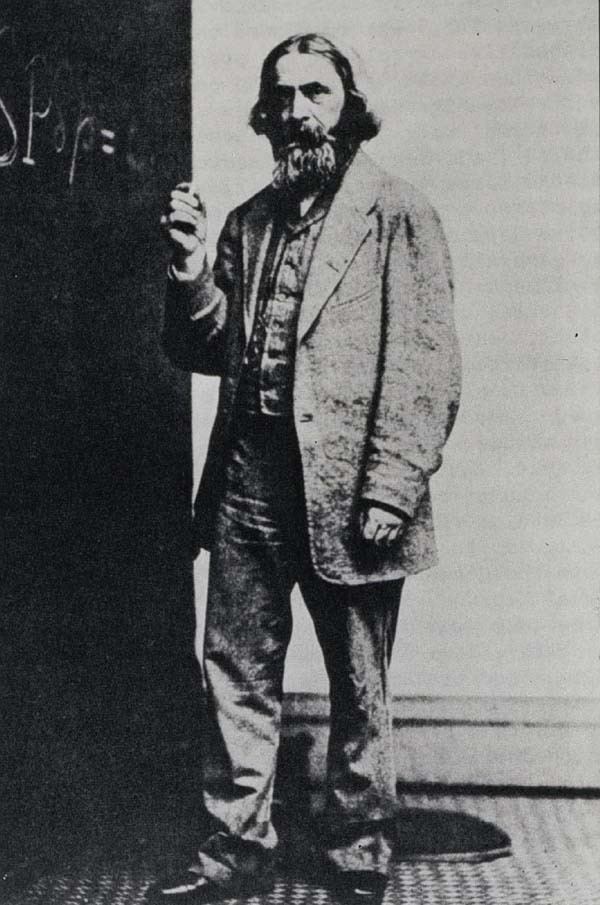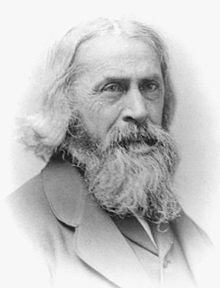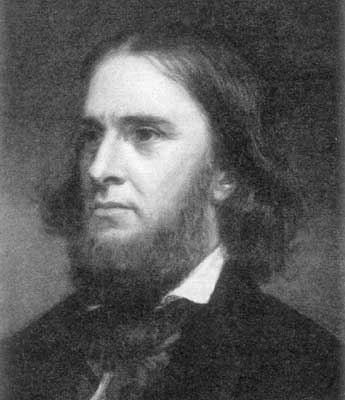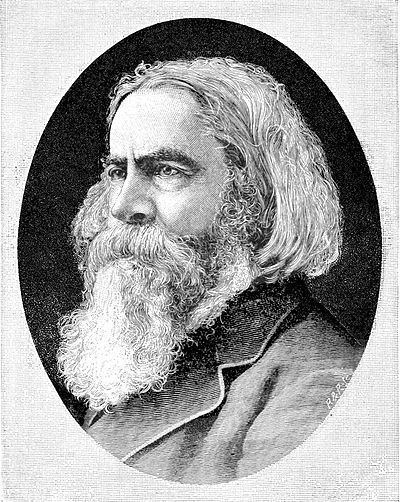Nationality American Name Benjamin Peirce Role Mathematician | Children Charles Sanders Peirce | |
 | ||
Born 4 April 1809Salem, Massachusetts ( 1809-04-04 ) Fields MathematicsStatisticsScience policy Institutions Harvard UniversitySuperintendent of the United States Coast Survey Books Linear Associative Algebra, An Elementary Treatise o, An Elementary Treatise o, An elementary Treatise o, An Elementary Treatise o Similar People Charles Sanders Peirce, George Boole, Georg Cantor, Bernard Bolzano, Friedrich Wilhelm Joseph S | ||
Benjamin Peirce
Benjamin Peirce (; April 4, 1809 – October 6, 1880) was an American mathematician who taught at Harvard University for approximately 50 years. He made contributions to celestial mechanics, statistics, number theory, algebra, and the philosophy of mathematics.
Contents
- Benjamin Peirce
- WIM Video The Stable Marriage Problem
- Research
- Mathematics
- Definition of mathematics
- Statistics
- Private life
- Eponyms
- Works
- References

He was the son of Benjamin Peirce (1778–1831), later librarian of Harvard, and Lydia Ropes Nichols Peirce (1781–1868).

After graduating from Harvard, he remained as a tutor (1829), and was subsequently appointed professor of mathematics in 1831. He added astronomy to his portfolio in 1842, and remained as Harvard professor until his death. In addition, he was instrumental in the development of Harvard's science curriculum, served as the college librarian, and was director of the U.S. Coast Survey from 1867 to 1874. He was elected a Foreign Member of the Royal Society of London in 1852.

WIM Video: The Stable Marriage Problem
Research
Benjamin Peirce is often regarded as the earliest American scientist whose research was recognized as world class. He was an apologist for slavery, opining that it should be condoned if it was used to allow an elite to pursue scientific enquiry.
Mathematics
In number theory, he proved there is no odd perfect number with fewer than four prime factors.
In algebra, he was notable for the study of associative algebras. He first introduced the terms idempotent and nilpotent in 1870 to describe elements of these algebras, and he also introduced the Peirce decomposition.
Definition of mathematics
In the philosophy of mathematics, he became known for the statement that "Mathematics is the science that draws necessary conclusions". Peirce's definition of mathematics was credited by his son, Charles Sanders Peirce, as helping to initiate the consequence-oriented philosophy of pragmatism.
Like George Boole, Peirce believed that mathematics could be used to study logic. These ideas were further developed by Charles Sanders Peirce, who noted that logic also includes the study of faulty reasoning.
In contrast, the later logicist program of Gottlob Frege and Bertrand Russell attempted to base mathematics on logic.
Statistics
Peirce proposed what came to be known as Peirce's Criterion for the statistical treatment of outliers, that is, of apparently extreme observations. His ideas were further developed by Charles Sanders Peirce.
Peirce was an expert witness in the Howland will forgery trial, where he was assisted by his son Charles Sanders Peirce. Their analysis of the questioned signature showed that it resembled another particular handwriting example so closely that the chances of such a match were statistically extremely remote.
Private life
He was devoutly religious, though he seldom published his theological thoughts. Peirce credited God as shaping nature in ways that account for the efficacy of pure mathematics in describing empirical phenomena. Peirce viewed "mathematics as study of God's work by God's creatures", according to an encyclopedia.
He married Sarah Hunt Mills, the daughter of U.S. Senator Elijah Hunt Mills. Peirce and his wife had four sons and one daughter:
Eponyms
The lunar crater Peirce is named for Peirce.
Post-doctoral positions in Harvard University's mathematics department are named in his honor as Benjamin Peirce Fellows and Lecturers.
The United States Coast Survey ship USCS Benjamin Peirce, in commission from 1855 to 1868, was named for him.
